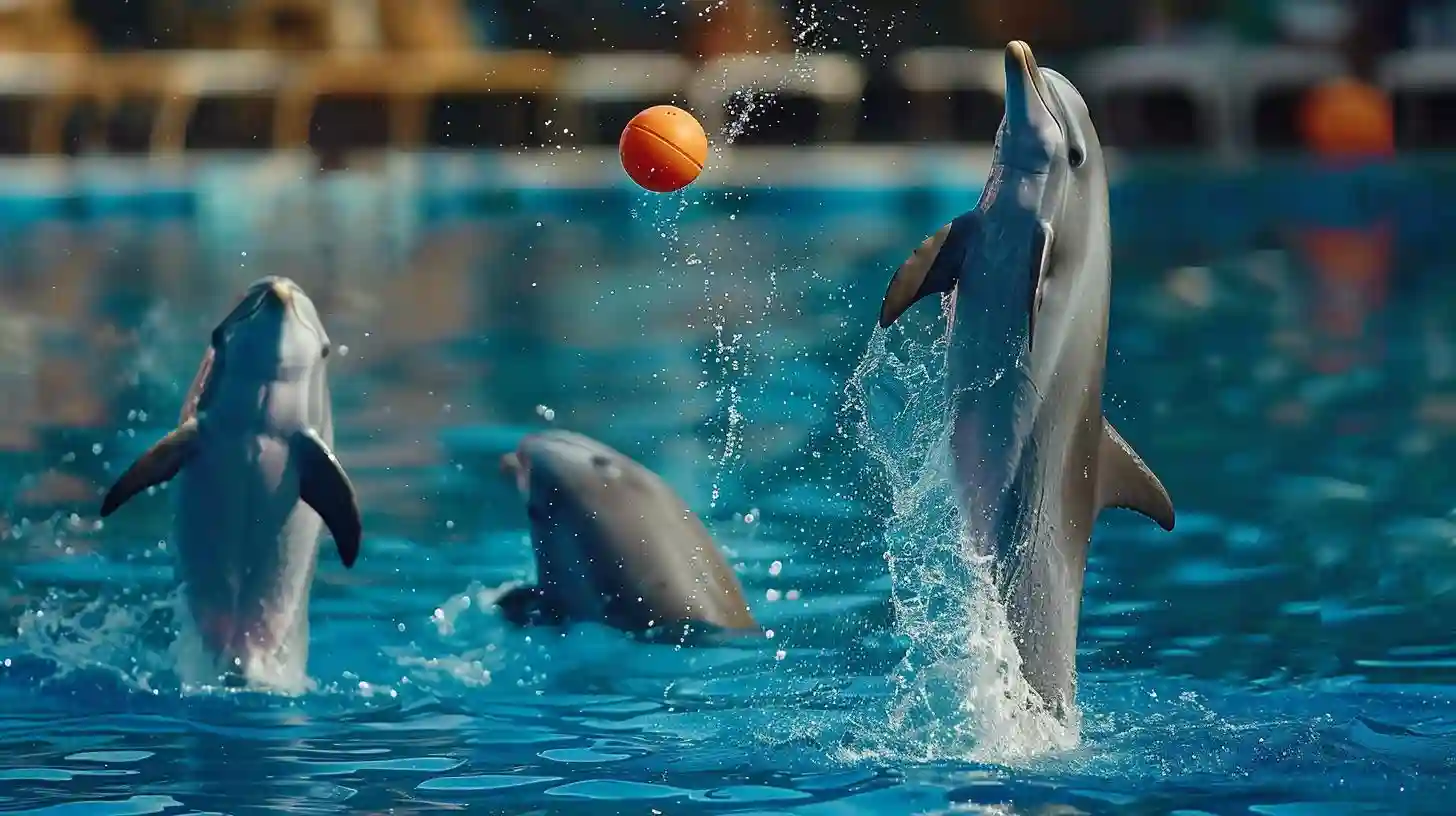
Dolphins have fascinated humans for centuries with their intelligence, agility, and playful nature. Among the numerous behaviors that captivate our attention, one stands out for its sheer exuberance and joyfulness: dolphins playing with balls. This seemingly simple activity provides a deeper insight into the remarkable cognitive and social abilities of these marine mammals.
To fully appreciate the marvel of dolphins playing with balls, one must first understand the broader context of dolphin intelligence. Bottlenose dolphins, in particular, possess a highly developed brain that is comparable to the human brain in certain aspects. They exhibit advanced problem-solving skills, demonstrate self-awareness, and possess the capability for complex communication. This foundation of cognitive sophistication sets the stage for understanding why they engage in recreational activities like ball play.
The sight of a dolphin interacting with a ball is a charming and captivating one. Whether in the wild or in aquatic parks, these marine mammals display an undeniable enthusiasm for this form of play. Dolphins have been observed using their rostrum, or beak, to nudge balls gently, propelling them through the water with effortless grace. They can also catch balls with their mouths or flippers and often engage in a mesmerizing dance, bouncing the ball back and forth with fellow dolphins or even humans. This kind of play is not just about physical activity but also about social interaction and cognitive stimulation.
Ball play among dolphins often serves as a social bonding activity. In dolphin pods or groups, play is essential for maintaining social structures and strengthening relationships among members. For young dolphins, engaging in such playful behavior is akin to human children playing games together. It fosters trust, cooperation, and communication among pod members. Furthermore, it allows the younger dolphins to practice and refine important skills such as hunting techniques and physical coordination, which are crucial for their survival in the wild.
What makes ball play even more intriguing is its repetitive nature. Dolphins can engage in this activity for extended periods without losing interest. This persistence indicates that the act of playing with a ball is intrinsically rewarding for them. Researchers have hypothesized that the pleasure derived from such play may be linked to the release of endorphins, the brain's natural "feel-good" chemicals. Observing dolphins repeatedly chasing and manipulating balls suggests that they derive a sense of satisfaction and joy from this behavior, much like humans do when engaged in recreational activities.
The interaction between dolphins and balls is not limited to nurturing social bonds within their own species. Dolphins have also been known to engage in ball play with humans, displaying a unique form of interspecies bonding. In marine parks and aquariums, trainers frequently use balls as tools to facilitate interactions and build trust with these highly intelligent creatures. Through playful activities, trainers can establish a positive rapport with the dolphins, enhancing their overall well-being and reinforcing the human-animal connection.
While the playful nature of dolphins is certainly captivating, it also serves as a reminder of their remarkable adaptability and curiosity. In the wild, dolphins have been observed using various objects as toys. They may toss seaweed, shells, or even small fish into the air and catch them, showcasing their natural inclination for play. The ability to spontaneously create games and engage in playful behavior demonstrates their capacity for flexibility and innovation, traits that are essential for their survival in changing environments.
Ball play is not merely an entertaining spectacle; it also plays a significant role in scientific research and conservation efforts. Researchers studying dolphin behavior often use play sessions with balls to gather valuable data on their cognitive abilities, problem-solving skills, and social interactions. By observing how dolphins engage with balls and other objects, scientists gain insights into their mental processes and emotional states. This information is crucial for developing effective conservation strategies, as it helps us understand the species' needs and behaviors in their natural habitats.
Moreover, the popularity of dolphin shows and interactive experiences involving ball play has raised awareness about the importance of marine conservation. As people witness these incredible creatures up close and engage with them through playful activities, they develop a deeper appreciation for the marine environment and the need to protect it. This heightened awareness can translate into increased support for conservation initiatives and efforts to preserve the oceans and their inhabitants.
The sight of dolphins playing with balls highlights the profound connection between these intelligent marine mammals and their environment. Playful behavior is not limited to improving physical fitness but is a testament to the joy and wonder that dolphins experience in their lives. As we continue to explore and understand the intricacies of their behavior, we gain a greater appreciation for the rich and complex lives of these remarkable creatures.
In a world where human activities increasingly threaten marine ecosystems, it is important to recognize the significance of protecting dolphins and their habitats. Ball play is just one facet of their existence, but it encapsulates the essence of their intelligence, sociality, and adaptability. By supporting conservation efforts and promoting awareness, we can ensure that future generations have the opportunity to witness the joy of dolphins at play and contribute to the preservation of our planet's oceans.
Witnessing dolphins play with balls is a reminder of the beauty and wonder that exists in the natural world. It encourages us to reflect on the importance of fostering harmonious relationships with all living creatures. The playful interactions between dolphins and these simple objects inspire us to protect and cherish the marine environments that sustain them. Through conservation efforts, scientific research, and a commitment to preserving the oceans, we can help ensure that dolphins continue to thrive and bring joy to our lives.